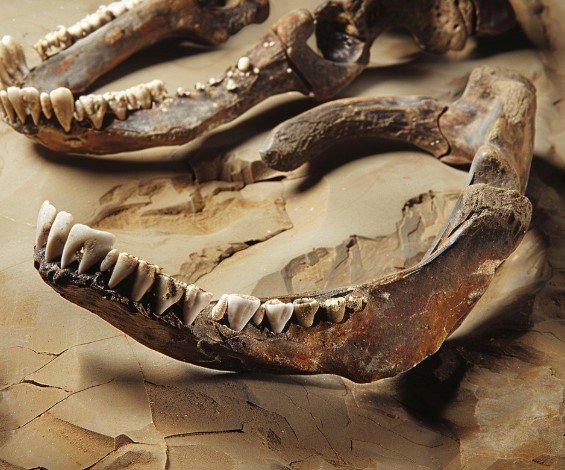Archaeologists in the country of Georgia have discovered a 1.8 million-year-old human jawbone at the Orozmani site, marking it as the oldest human remains found outside Africa. This find, announced on August 27, 2025, offers fresh insights into the early migration of Homo erectus from Africa to Eurasia around two million years ago.
Key Details of the Orozmani Discovery
The jawbone came to light during excavations in the village of Kvemo Orozmani, about 62 miles southwest of Tbilisi, Georgia’s capital. Led by archaeologist Giorgi Bidzinashvili from Ilia State University, the team worked on a site no larger than two parking spaces.
This compact area has proven rich in prehistoric treasures. Along with the jawbone, researchers uncovered stone tools and fossils from animals that roamed the region long ago.
Experts date the jawbone to 1.8 million years ago based on geological layers and nearby artifacts. The find builds on a 2022 discovery at the same site, where a human tooth from the same era was excavated.
Link to Homo Erectus Migration
Homo erectus, known as skilled hunter-gatherers, likely began leaving Africa about two million years ago. This jawbone supports theories that they reached Eurasia early in that journey.
Scientists believe these early humans adapted to new environments, using tools to survive in diverse landscapes. The Orozmani evidence suggests Georgia was a key stop in their spread across continents.

This discovery challenges some older ideas about migration timelines. It shows humans may have moved out of Africa sooner and in more organized ways than previously thought.
Comparisons with other sites reveal patterns. For instance, similar fossils in Asia and Europe point to a wave of migrations driven by climate changes and food needs.
Related Finds and Animal Fossils
The Orozmani site has yielded more than just human remains. Archaeologists found a variety of animal bones that paint a picture of the ancient ecosystem.
Here are some of the key animal fossils uncovered alongside the jawbone:
- Saber-toothed tiger remains, indicating large predators in the area.
- Elephant bones, showing massive herbivores that early humans might have hunted.
- Wolf and deer fossils, suggesting a mix of carnivores and prey.
- Giraffe remnants, hinting at a warmer climate with open grasslands.
These finds help reconstruct the world Homo erectus inhabited. Stone tools nearby imply these early humans interacted with these animals, possibly for food or materials.
In the nearby Dmanisi site, just a short distance away, researchers have found 1.8 million-year-old human skulls over the years. That location has long been a hotspot for such discoveries, with the first major finds dating back to the 1990s.
Expert Views on the Significance
Giorgi Bidzinashvili, the lead archaeologist, stated that studying these remains will reveal details about the lifestyle of Eurasia’s first human settlers. He emphasized how Orozmani could reshape our understanding of human history.
Other experts agree. Paleoanthropologists note that this jawbone provides clues about physical traits, like diet and health, of early Homo erectus.
One key aspect is the jaw’s structure, which might show adaptations for chewing tough foods in new environments. This could link to evolutionary changes that helped humans thrive outside Africa.
Recent studies from 2024 on similar fossils in East Africa support these ideas, showing genetic ties between African and Eurasian populations.
Broader Impact on Human Evolution Research
This discovery ties into ongoing debates about human origins. It adds to evidence that Homo erectus was more advanced than once believed, with possible social structures for long migrations.
Researchers plan further digs at Orozmani to uncover more artifacts. They aim to use advanced dating methods, like improved radiometric techniques, for precise timelines.
The find also highlights Georgia’s role in paleoanthropology. The country has become a global hub for such research, attracting international teams.
To illustrate the timeline of major Homo erectus discoveries, here’s a simple table:
| Year of Discovery | Site Location | Key Find | Age Estimate |
|---|---|---|---|
| 1991 | Dmanisi, Georgia | Human skulls | 1.8 million years |
| 2022 | Orozmani, Georgia | Human tooth | 1.8 million years |
| 2025 | Orozmani, Georgia | Human jawbone | 1.8 million years |
| 1891 | Java, Indonesia | Skull cap | 1.5-0.7 million years |
This table shows how recent Georgian finds fit into the bigger picture of human evolution studies.
What This Means for Future Studies
The jawbone opens doors for new research questions. Scientists wonder if these early migrants formed communities or traveled in small groups.
It also sparks interest in how climate shifts influenced their paths. Data from 2023 climate models suggest ice age patterns pushed humans toward warmer regions like Georgia.
As studies continue, this find could influence textbooks and museum exhibits worldwide. It reminds us how discoveries keep rewriting our shared history.
What do you think about this ancient jawbone and its clues to human migration? Share your thoughts in the comments below, and feel free to pass this article along to friends interested in history or science.
